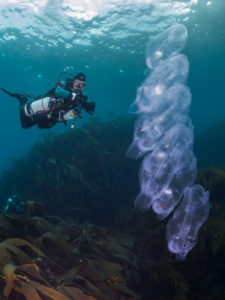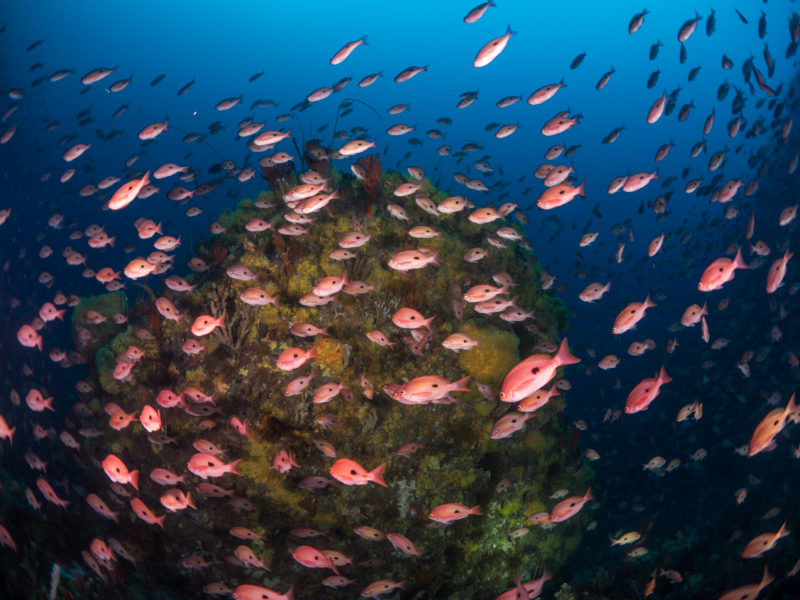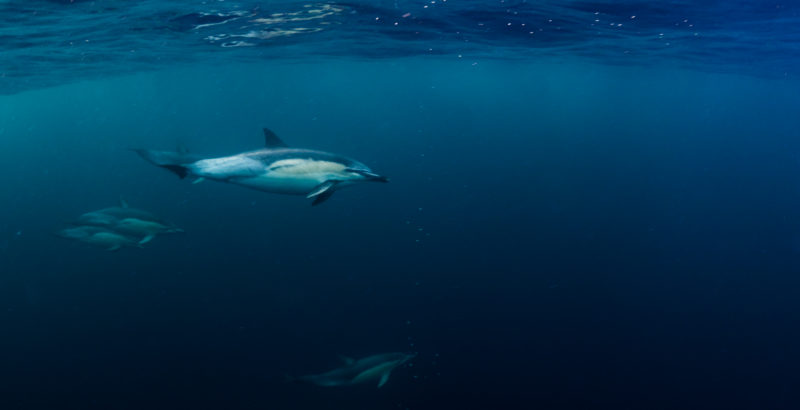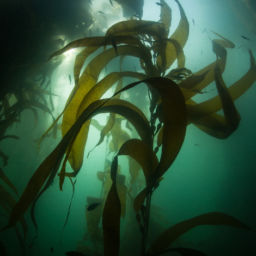 Although we most often associate Australia with tropical diving on the Great Barrier Reef, the island-state of Tasmania off its southern tip offers a temperate-water paradise. Indeed, Tasmania’s tip sits closer to Antarctica than it does to most of the Great Barrier Reef. Water temperatures range from around 59 F (15 C) in summer (January through March) and can drop down to 52 F (11 C) in winter (June through September). Divers will want at least a 7 mm wetsuit but will be far more comfortable in a drysuit. But the cooler temperatures are worth it: shipwrecks, sea caves, crystal-clear water, dolphins, seals and schools of fish thousands strong are just a few highlights of scuba diving in Tasmania.
Although we most often associate Australia with tropical diving on the Great Barrier Reef, the island-state of Tasmania off its southern tip offers a temperate-water paradise. Indeed, Tasmania’s tip sits closer to Antarctica than it does to most of the Great Barrier Reef. Water temperatures range from around 59 F (15 C) in summer (January through March) and can drop down to 52 F (11 C) in winter (June through September). Divers will want at least a 7 mm wetsuit but will be far more comfortable in a drysuit. But the cooler temperatures are worth it: shipwrecks, sea caves, crystal-clear water, dolphins, seals and schools of fish thousands strong are just a few highlights of scuba diving in Tasmania.
Diving here is primarily via day boats and towering dolomite rocks line the best dive sites. Staying on shore is the only option, however, since no liveaboards operate in the area.
Shallow-water dives can mean interaction with seals and dolphins while deep dives feature curtains of densely packed pink butterfly perch. To get the most out scuba diving in Tasmania, it’s worth being qualified as a deep diver as the seafloor can reach a depth 130 feet (40 m) on some dives.
Getting to Tasmania means flying through one of Australia’s major cities, such as Sydney or Melbourne. If you’ve got a vehicle in Australia you can bring it across from the mainland on an overnight car ferry. Once in Tasmania, some dive shops offer affordable onsite accommodation, although there are plenty of Airbnb or hotel options as well.
Types of scuba diving in Tasmania
Sea caves
Sea caves with multiple passages and easy swim-throughs are rare in the diving world, but Tasmania features some of the planet’s most accessible environments. Huge passageways lead you underneath headlands, allowing divers to surface in a different bay than the one they began in. Tight spaces may mean squeezing through a small gap or two, but multiple exits fill the passageways with light and their sheer size means you’re never diving in the dark. Rocky cave floors means there’s no silt or particles, so it’s impossible to kick up the bottom or get lost because of a silt-out.
Seal diving
Dozens of seal colonies dot the spectacular coastline, a tourist highlight in itself. Hundreds of these beautiful and humorous animals spend their days sleeping on the rocks, splashing around in the shallows, or chasing fish around deep shipwrecks. Dive in the shallow water with these comedians of the sea or, more likely, encounter them serendipitously while you’re just going for a dive. Curious seals commonly approach divers on their safety stops, looking for a few minutes of fun while they take a break from catching fish.
Shipwrecks
Multiple ships have wrecked off Tasmania’s coast. The most famous — and exciting — of these is the Nord. The steamship was loaded with loaded with 12,000 cases of benzine (petroleum)
in 1915 as it headed from Melbourne to Hobart when it struck an uncharted rock in the passageway inside the Hippolyte Rocks. It now sits between 114 and 130 feet (35 and 40 m), still mostly intact. After a dive or two you can easily recognize the vessel’s bow and stern, along with other nautical features. The visibility is often so clear that the sun shines down through the water, illuminating the entire wreck. Plentiful fish populate the wreckage, swimming in and out of vibrant sponges and corals, while beautiful zoanthids add more uncommon hues to the mix. Whether you are into nature or wreck diving, the Nord has something for everyone.
Deep walls
Descending on a wall dive is uncommonly special in Tasmania. Enormous quantities of fascinating invertebrate life covers the walls, and one such animal stands out above the rest. Yellow zoanthids number in the hundreds of thousands, coating walls so that yellow is all you see in every direction. This makes for an unforgettable view. As you reach the deeper sections, gigantic sponges adorn every rock and thousands of fish swim by or simply hang around in the open ocean. At times it feels as though you are swimming in an ocean made of fish rather than water. The Sisters dive site is one of Australia’s best wall dives, let alone Tasmania. Following enormous underwater pillars down to the seafloor, you pass through multiple colorful habitats before reaching areas where you’ll see more fish than ever before in your life.
Whales and dolphins
While sightings are never guaranteed, whales do migrate down the coastline with their young at certain times of year. It’s of course pure luck if you manage to see one underwater. Dolphins are more common, often enjoying the wake a boat makes as it zooms along the coast. You’ll see them following boats for up to half an hour as they frolic in the waves and play games, often popping out just a few feet away. If you’re really lucky you may have a chance to snorkel with them. Once the boat stops, they will often hang around beneath it for five or 10 minutes. If you are geared up and ready, it pays to jump in for a glimpse.







